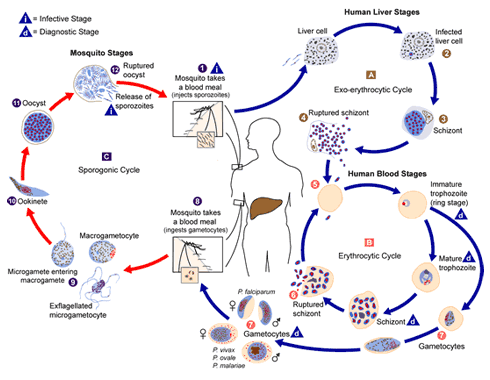Biology
The malaria parasite life-cycle involves two hosts: human and mosquito.
In the human:
- during a blood meal, a malaria-infected female Anopheles mosquito injects P. falciparum parasites into the human host
- the parasites travel via the blood to the liver, where they infect liver cells
- they mature and move back to the blood where they undergo asexual multiplication inside the human red blood cells (ring-stage)
- in the blood, some parasites can differentiate into sexual stages (gametocytes)
- blood stage parasites are responsible for the symptoms of the disease
In the mosquito:
- the gametocytes, male and female, are ingested by an Anopheles mosquito during a blood meal
- while in the mosquito's stomach, the male parasite penetrates the female parasite and this new parasite form becomes motile, able to invade the midgut wall of the mosquito where it develops into oocysts (or eggs)
- they grow, rupture, and release further parasites in a new form capable of moving towards the mosquito's salivary glands ready for inoculation into a new human host to perpetuate the malaria life cycle
